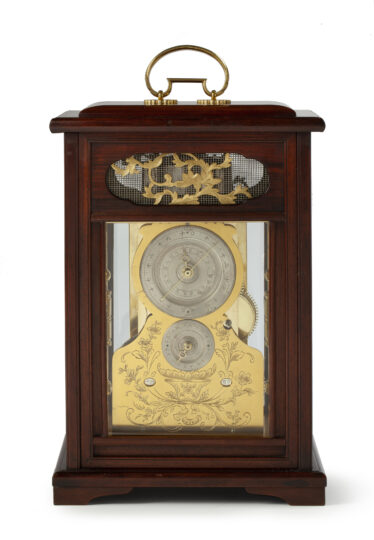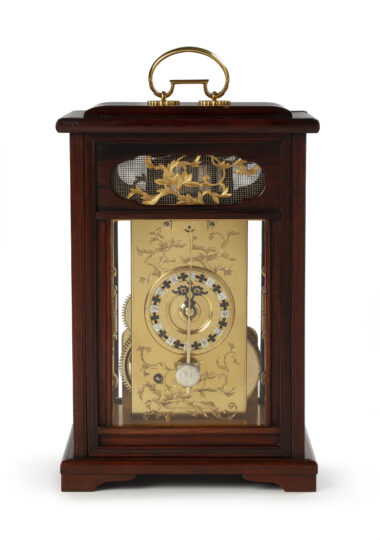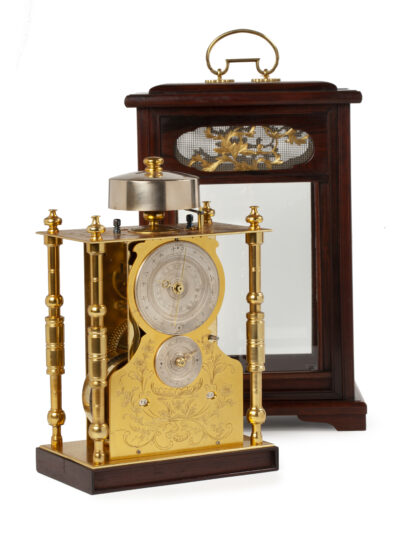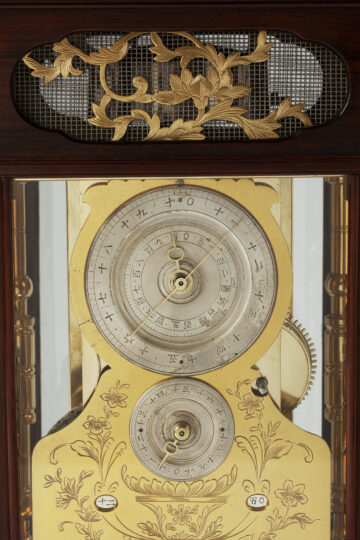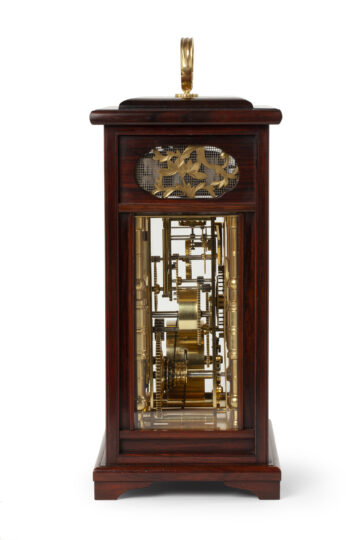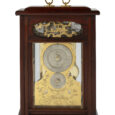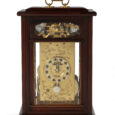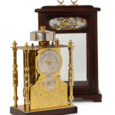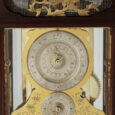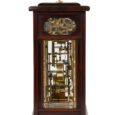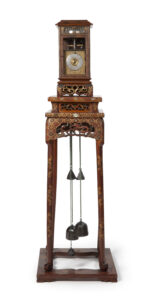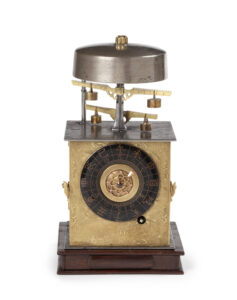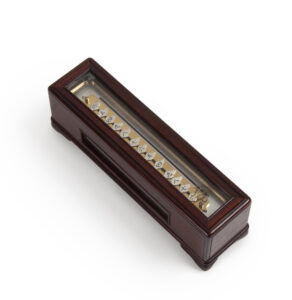RARE JAPANESE TABLE CLOCK ‘MAKURA DOKEI’ WITH TWO DIALS AND STRIKING Ca. 1850
M&R25
RARE JAPANESE TABLE CLOCK ‘MAKURA DOKEI’
WITH TWO DIALS AND STRIKING
Circa 1850
Japan
Movement
The spring-driven brass movement consists of going and striking trains. The going train has a chain fusee and a verge escapement. The striking train is regulated by a countwheel and indicates the hours from 9x to 4x on a bell. The half hours are indicated alternatingly by one or two strokes. The movement is wound from the front and the back.
Dials
The brass front and backplates are beautifully engraved showing floral, leaf and scroll motifs. The front has a classic Japanese dial with a fixed pierced blued steel hand. The chapter ring is divided into twelve Japanese characters on silvered plates which can be moved forwards and backwards to adjust for day and night hours, running from 9-4 and turning around in twelve hours. There are also unmarked blued-steel plates for the half hours. The back shows a circular silvered dial with Japanese divisions. The time is indicated by two brass hands. Th larger hand turns around a hundred times per hour whilst the smaller hand turns around ten times during the same time. Under this dial is a smaller silvered dial with Japanese numerals, the corresponding brass hand rotating once per hour. There are two apertures showing the date and the sign of the zodiac.
Case
The brass movement has a top and bottom plate connected by four shaped turned pillars. There are four finials on the corners and the bell is mounted on a bell stand op the top plate. The whole fits into a Shitan wood glazed case, with sound frets above the two dials. The case is surmounted by a delicately made carrying handle.
Duration one day
Height 34.5 cm.
Width 20 cm.
Depth 14 cm.
Literature
– N.H.N. Mody, Japanese clocks.
– W. Brandes, Alte Japanische Uhren.
– TIJDschrift 0203 and 0204
Japanese time measurement
Japanese time measurement is very different from its counterpart in the Western world. Instead of a fixed value for an hour the length of an hour in Japan, called toki is variable depending on the length of the day and night. Day and night are both divided into six toki, which cover the periods from sunrise to sunset and from sunset to sunrise. In summer the days are longer than the nights and consequently a day toki last longer than a night toki. In winter it is the other way around. This is the reason why Japanese clocks have sliding chapters to adjust the length of a toki. There are also clocks with a fixed chapter ring and a revolving hand. To regulate the lengths of the toki the weights on the foliot can be moved, which makes the clock go faster or slower. This is mainly found in older clocks. The hour numerals run from nine to four, the latter being midday. Number nine was holy in Japan. Each toki, twelve in total, also had its own sign of the zodiac, which were sometimes indicated on a ring around the chapter ring. This is mainly found in older clocks. The hour numerals run from nine to four, the latter being midday. Japanese clocks indicate how many hours there are to come (5 is followed by 4), whilst European clocks indicate how many hours have passed (5 is followed by 6). In Japan the figure 9 was holy. Each toki, twelve in total, also had its own sign of the zodiac, which were sometimes indicated on a ring around the chapter ring.

